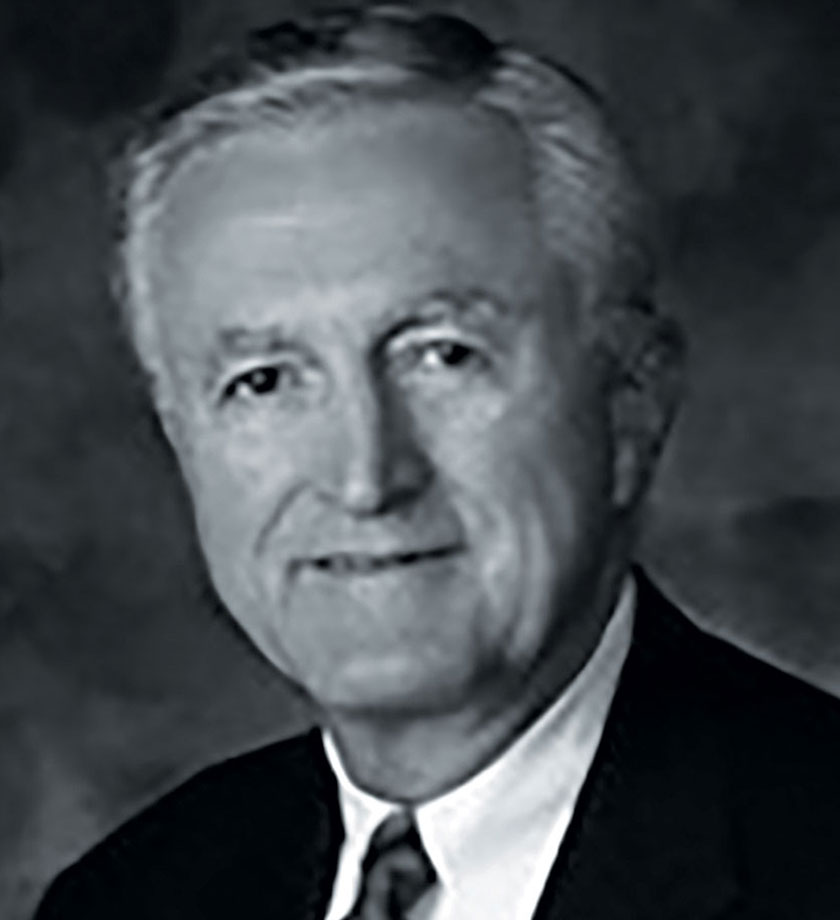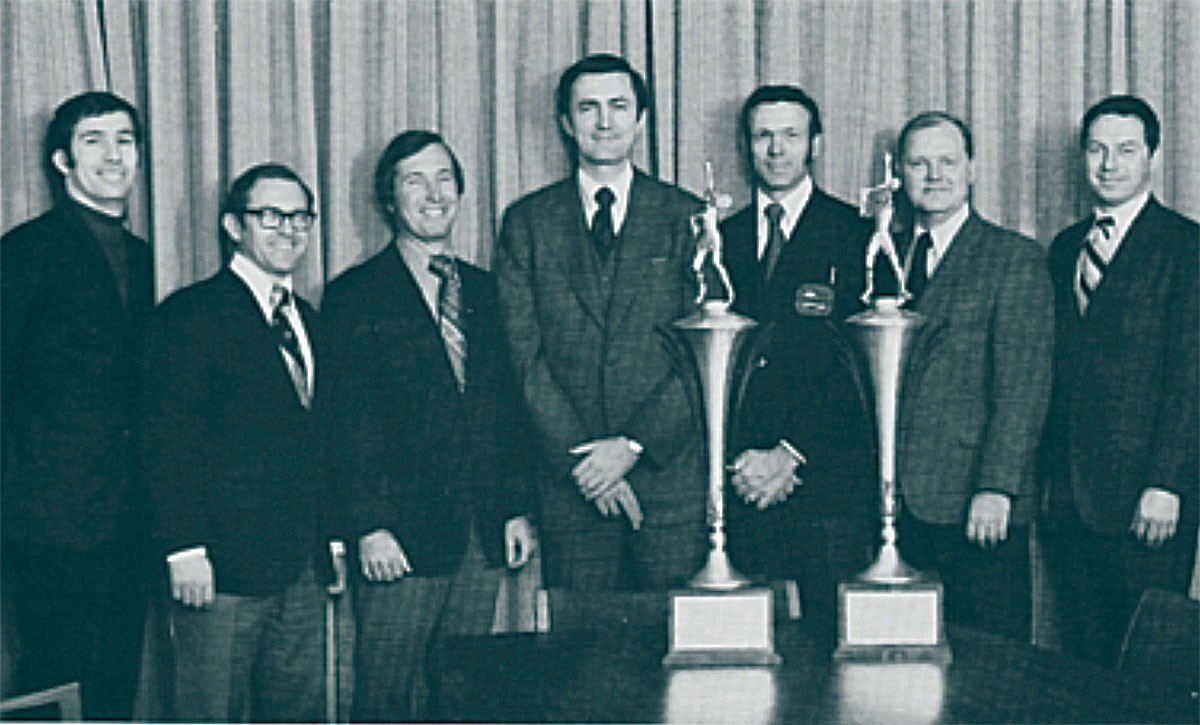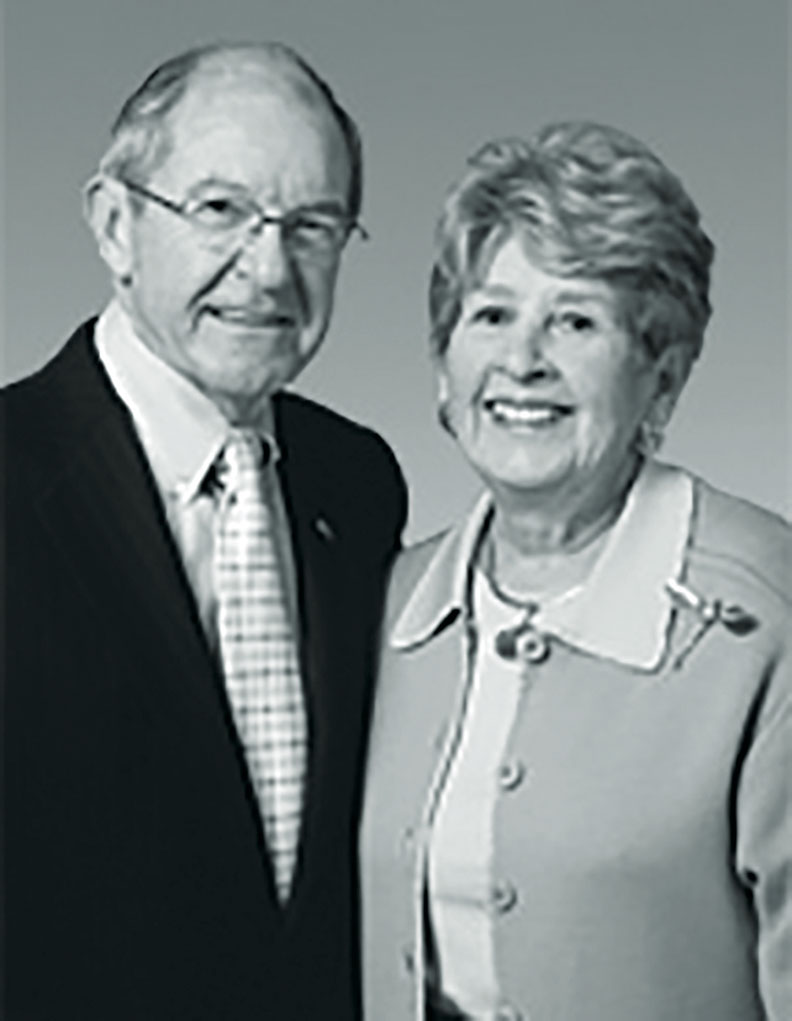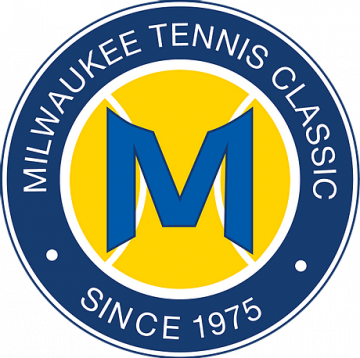The Beginnings of a Classic
How Milwaukee Leaders, Tennis Fans Defied the Odds and Started an Annual World-class tournament

Three men had a vision.
A vision that would last for more than 42 years. A vision that would bring the Milwaukee community together for a spectacle of tennis greatness. The first national intercollegiate tennis tournament ever in Milwaukee was born, the Milwaukee Tennis Classic.
The initial board of directors for the tournament consisted of George J. Gaspar, John D. Roethle and Charles C. Mulcahy.
It was late 1975. The city’s then mayor, Henry W. Maier, wrote his welcome to the courts of Helfaer Stadium at Marquette University and the Milwaukee Auditorium, the final venue for the three-day tournament: “It is a pleasure to welcome you to Milwaukee. I hope that you will have time to visit and enjoy our great city’s gemuetlichkeit … a feeling of warmth and good fellowship.”
In addition, John L. Doyne, Milwaukee’s County Executive, said he was pleased to encourage this event to promote tennis in Milwaukee County. The Milwaukee Journal joined with the event to become the major sponsor with a $5,000 contribution.
The venue for the tournament was the Evan P. Helfaer Tennis Stadium and Recreation Center, a $2 million dollar project for the students and community of Marquette University. The Rev. John P. Raynor, S.J., Marquette’s president said in honoring Helfaer, “We are grateful that he has bequeathed to us his hope for the future and his love for his fellow man.” (Marquette University’s Helfaer Facilities home page)
 With hope for the MTC to become a lasting, annual event, play began at the 1975 Milwaukee Tennis Classic. Players from a multitude of universities filled the courts with their forehands, backhands and their volleys. Represented were the Ivy League (Princeton); the Big 10 (University of Iowa, Michigan State University, University of Michigan, University of Minnesota, University of Wisconsin); Wisconsin state schools (Eau Claire, La Crosse, Milwaukee, Oshkosh, Stevens Point, and Whitewater); private colleges/universities (St. Mary’s College of Notre Dame, Memphis State University, Marquette University, Coe College, Illinois State University, Memphis State University, Miami University of Ohio, Central Michigan University); Big Eight Conference (University of Oklahoma); and Southern Conference (Tulane).
With hope for the MTC to become a lasting, annual event, play began at the 1975 Milwaukee Tennis Classic. Players from a multitude of universities filled the courts with their forehands, backhands and their volleys. Represented were the Ivy League (Princeton); the Big 10 (University of Iowa, Michigan State University, University of Michigan, University of Minnesota, University of Wisconsin); Wisconsin state schools (Eau Claire, La Crosse, Milwaukee, Oshkosh, Stevens Point, and Whitewater); private colleges/universities (St. Mary’s College of Notre Dame, Memphis State University, Marquette University, Coe College, Illinois State University, Memphis State University, Miami University of Ohio, Central Michigan University); Big Eight Conference (University of Oklahoma); and Southern Conference (Tulane).
The men’s singles event was scheduled for 8 a.m. at Helfaer Stadium, with the women to follow at 1 p.m, on Sunday, December 28, 1975. The $2 tournament pass or the $1 individual session ticket could get you in to see some of the following men’s round of 32 match-ups: Princeton’s Bill Dutton versus Illinois State’s Roger Junge, Oklahoma’s freshman (fresh off the junior scene as the 11th ranked player in the nation) Brian Crozier versus Michigan State Spartan Tighe Keating, and Marquette Warrior’s Tom Schellinger versus Michigan’s Jim Holman. On the women’s side, 18 participants saw action in the draw. On the top half of the bracket match-ups were a Wisconsin star from Carroll College, Debbie Arps, against University of Wisconsin-Stevens Point’s Anne Okonek, University of Wisconsin- La Crosse’s Ginger Loughman against Wisconsin Badger Cindy Berger, and Princeton’s Linda Rice against University of Whitewater’s Debbie Burgess. Play ensued through Tuesday, December, 30 at the Milwaukee Auditorium with the conclusion of Men’s and Women’s Singles Semis followed by both finals and ultimately capped off by the Men’s and Women’s Doubles Finals. Keith West from Memphis State University took the Men’s Singles trophy while Paul Lockwood and Brian Crozier from Oklahoma University dominated the Men’s Doubles.
 On the women’s side Princeton University trounced all competition in both singles and doubles with Linda Rice taking both singles and doubles crowns, her partner being fellow teammate Debbie Campbell. Princeton graduate Dick Wythes recruited Rice and Campbell.
On the women’s side Princeton University trounced all competition in both singles and doubles with Linda Rice taking both singles and doubles crowns, her partner being fellow teammate Debbie Campbell. Princeton graduate Dick Wythes recruited Rice and Campbell.
Gaspar, one of the founders of the tournament, was also on the seeding committee. He remembers that of the top seeds that they placed in the draw, two or three ended up in the semis and finals. “We were shocked that we could be so good,” says Gaspar.
Supported by athletic directors Al McGuire (Marquette) and Elroy Hirsch (Wisconsin), the event was hosted by both the University of Wisconsin-Madison and Marquette University. Co-chairs of the event were the head coaches of the two universities, Denny Schackter (UW) and Brand Spangenberg (MU).
When reflecting back upon the tournament in 1975, Schackter, tennis coach at Wisconsin from 1972 – 1981, says, “As I recall the forming of the Milwaukee Tennis Classic, the folks at Marquette, including George Gaspar, Chas, and Brand Spangenberg, wanted to mimic the Milwaukee Basketball Classic with a Tennis Classic. I was brought in to help recruit players from the Big 10 Schools. At that time I was in my second or third year of coaching at Wisconsin and thought this was a great way for promoting tennis in Wisconsin and exposing Big 10 players, both men and women, to our state. I did very little as most of the grunt work was done by Chas and the folks at Marquette, tennis enthusiasts in Milwaukee, which of course, is still the case. I am still involved because I believe in the event and marvel at the energy that has been exuded by Chas for all these years. Without his persistence, knowledge, and love of tennis in Milwaukee, this event would have died years ago. I’d like to nominate Chas for Sainthood, but do not have a pipeline to the Pope!” About his career at Wisconsin, Schackter recalls, “I know we won more matches than we lost and we had a couple of years in the top 25. Other than that, I can tell you that I had a wonderful career at Wisconsin.”
Marquette coach Brand Spangenberg, a 1961 #1 singles player for Marquette and MVP for that year, joined the ranks of collegiate coaches as a part-time gig from 1975-1979. Just before Spangenberg’s tenure, the former Intramural director, Donald Clark held the coach’s reins. According to Spangenberg, “Clark knew nothing about tennis. He actually had been a pro-football player for the Chicago Bears at one point in time.” Despite his minimal knowledge of tennis, Clark, before his passing, one summer day met with Mulcahy to reminisce over their 1958-59 season, when Clark was the coach and the team went 21-2 overall for two seasons. Clark that day also managed to show him the Helfaer Stadium and Recreation Center, which was being built in 1974. Mulcahy recalls, “We visited the Helfaer site, which was under construction, and I realized Marquette was going into a new era. We would no longer be playing our home tennis matches in Washington Park. Now the home matches would be in a first-class indoor facility where the weather was no longer a factor. I was elated and started thinking about how we could use this facility to further advance the tennis program.”
Athletic Director and basketball coaching legend Al McGuire was also a big supporter of the MTC. Both Spangenberg and Mulcahy have memories of speaking with McGuire about the tournament. Spangenberg mentions that McGuire had “minimal understanding of tennis” and would ask Spangenberg jokingly, “Do you really need so many cans of tennis balls? Why do you need tennis balls for every match?” McGuire would proceed to remind the tennis coach that basketball players only needed one basketball every game to shoot through the hoops.
Mulcahy’s experience with McGuire was one that cultivated the support that he needed to get the 1975 Milwaukee Tennis Classic off the ground. Mulcahy recalls, “I contacted Coach Al McGuire, who was Athletic Director, and went to see him. He was coming off the 1974 NCAA men’s basketball championship game where Marquette lost to North Carolina State in the final game. We talked about the success of men’s basketball. I suggested we needed another sport at Marquette which would achieve national prominence. I mentioned tennis and the MTC. He was surprised as could be anticipated, but he immediately said he would be supportive. Coach McGuire supported the MTC for the rest of his life. When the MTC was 10 years old, Coach McGuire, no longer connected to Marquette, was the sole commentator on a colorful video supporting the tournament. He did a great job in that video.” Another Marquette University well-known figure who supported the tournament was former Marquette basketball coach and at the time McGuire’s assistant coach, Hank Raymonds. Mulcahy partially attributes the getting of the tournament running to Raymonds’ daughter, Linda, who played on the Marquette women’s tennis team. When referring to Raymonds, Mulcahy recalls, “Hank was so supportive from the start … We owe him a lot, because he was the person involved with any day-to-day details or questions about the tournament. Hank was always enthusiastic. He liked and supported tennis.” (Nov. 3, 2004 Roger Jaynes’ article in the 29th annual Milwaukee Tennis Classic program)
Another fixture of the Milwaukee tennis scene, then tournament director J. Cary Bachman, said, “We received many offers of help from Milwaukee tennis enthusiasts … the people here want to see tennis grow.” (First Milwaukee Tennis Classic program) George Gaspar, board of director member and co-founder of the tournament, besides being one of the founders of the tournament, was responsible for procuring the players. The major question was, Why would top men and women tennis players come to Milwaukee in the bitter cold of winter to play in a college tennis tournament which had never been held before? According to Mulcahy, “The answer was George. He started calling (and negotiating) with college coaches from around the U.S. telling them about this fabulous tournament which had never been held. The responses of the coaches were interesting. Probably close to an equal number were positive and negative.” One of Gaspar’s first calls was to Stanford University, historically a collegiate tennis powerhouse. Gaspar recalls that Stanford had “a negative response to the potential ability” of the tournament. Gaspar also recalled a conversation with University of Michigan’s head coach Brian Eisner. According to Gaspar, Eisner thought the tournament was a “great idea and would help as much as possible to generate interest around a university level event.” With a response like that of Eisner and the insight and energy of the three men, a fire was lit, and the tournament was motivated to procure players from all over the country.
The vision of the three, Gaspar, Roethle and Mulcahy, came into focus on the front windowsill at a holiday party at the home of Bill Gaus in Fox Point. In Mulcahy’s recollection, “John Roethle, George Gaspar and I were engaged in a holiday discussion and Helfaer Tennis Stadium came up. We started talking about what a difference that facility would make for tennis at Marquette. We thought Helfaer would probably be used for tournaments, and then we got the idea of a college tennis tournament. We all said we could do this. One of us said, ‘We could call it the Milwaukee Tennis Classic!’ The three of us that evening agreed that we would found the MTC!”
Little by little, the tournament evolved into a wintry mirth of overhead smashes and aces throughout the Helfaer Stadium. Marquette’s Lawrence S. Preo served as the tournament’s Facilities Director at Helfaer. Marquette’s Tat Shiely was Services Director. Hy Popuch, as Awards Director, provided the trophies. Bill Roberson, Kevin Byrne, Bill Letwin and Mary Pat Cunningham served on the publicity committee. Robert Brunner, as Housing Chair, started a multiple decade tradition of providing housing for all players.
The indoor tournament, which took place between semesters of the universities’ calendars, featured some of the country’s best players, men and women.
 “This was before Title 9. We agreed that all aspects of the tournament would be equal for women and men. That may not seem that critical today, but at that time women’s athletics were still struggling for equality. Having three daughters encouraged me more,” said Mulcahy. In the 1975 Milwaukee Tennis Classic program, a section was titled “Women Take to the Courts.” It reads, in part: “Move over, men. The feminine hand that wields the tennis racket may yet rule the tennis world.” Among those women who wielded the racket was long-time local tennis veteran and former coach of UW-Whitewater (1995-2003), Debbie Burgess. Burgess played for Whitewater from 1975-77. Burgess has fond memories of the event in which she made it to the Milwaukee Tennis Classic’s women’s doubles semi-finals with teammate Jean Peterson. Burgess recalls: “When Coach Wangerin called my doubles partner Jean Peterson and me into his office to tell us that we had been invited to play indoors in the very first Milwaukee Tennis Classic at the beautiful new Helfaer Tennis Center, we immediately said, ‘Yes.’ Playing tennis in the winter at the Helfaer Tennis Center was quite an adjustment. When it rained at UW-Whitewater our practices (and matches) moved indoors to the Williams Center with orange tennis balls bouncing on wooden basketball courts. Although the level of competition at the Milwaukee Tennis Classic was at least twenty stories above us, we appreciated the opportunity to be there and learned a lot …We were in and out of the tournament in record time, but we enjoyed watching the higher level players compete and had lots of fun meeting players from around the state and country. The experience also motivated me to want to improve my game. I’ll always remember opening the door to the Helfaer Tennis Center that blazed the trail into the future for me to further develop my game, compete at a higher level, and meet lots of wonderful friends along the way. I am so grateful and thankful to the tournament committee and Coach Wangerin for extending the invitation to experience tennis at a higher level and realize the game can be played any time of the year and at almost any age!”
“This was before Title 9. We agreed that all aspects of the tournament would be equal for women and men. That may not seem that critical today, but at that time women’s athletics were still struggling for equality. Having three daughters encouraged me more,” said Mulcahy. In the 1975 Milwaukee Tennis Classic program, a section was titled “Women Take to the Courts.” It reads, in part: “Move over, men. The feminine hand that wields the tennis racket may yet rule the tennis world.” Among those women who wielded the racket was long-time local tennis veteran and former coach of UW-Whitewater (1995-2003), Debbie Burgess. Burgess played for Whitewater from 1975-77. Burgess has fond memories of the event in which she made it to the Milwaukee Tennis Classic’s women’s doubles semi-finals with teammate Jean Peterson. Burgess recalls: “When Coach Wangerin called my doubles partner Jean Peterson and me into his office to tell us that we had been invited to play indoors in the very first Milwaukee Tennis Classic at the beautiful new Helfaer Tennis Center, we immediately said, ‘Yes.’ Playing tennis in the winter at the Helfaer Tennis Center was quite an adjustment. When it rained at UW-Whitewater our practices (and matches) moved indoors to the Williams Center with orange tennis balls bouncing on wooden basketball courts. Although the level of competition at the Milwaukee Tennis Classic was at least twenty stories above us, we appreciated the opportunity to be there and learned a lot …We were in and out of the tournament in record time, but we enjoyed watching the higher level players compete and had lots of fun meeting players from around the state and country. The experience also motivated me to want to improve my game. I’ll always remember opening the door to the Helfaer Tennis Center that blazed the trail into the future for me to further develop my game, compete at a higher level, and meet lots of wonderful friends along the way. I am so grateful and thankful to the tournament committee and Coach Wangerin for extending the invitation to experience tennis at a higher level and realize the game can be played any time of the year and at almost any age!”
At home in Milwaukee was Marquette Warrior Anne Hanneken. After her freshman year playing for the men’s Marquette team, Hanneken jumped ship to assume a position on the women’s team as a sophomore. She recalls her days as a Warrior in the new Helfaer Stadium and Recreation Center, remembering how “new it smelled…it was fabulous. We had our own private locker rooms, almost like VIPs.” Anne joined the ranks of the other players in the inaugural event. After winning her first rounds, Hanneken fell to the eventual champion of the event, Princeton’s Linda Rice. “The first year was exciting. Chas Mulcahy was the most enthusiastic promoter. It was his dream to have all the top players from around the United States competing together,” Anne recalls and adds, “I remember Linda Rice was the women’s singles champion. She was a good friend of mine. We were part of a team of 40 tennis instructors from all around the United States who managed a summer-long tennis camp at Curry College, just outside of Boston. We developed wonderful friendships. The best part of the Milwaukee Tennis Classic was seeing tournament players that you knew from all over the nation, athletes you may have played against or taught with in college camps. The tournament brought everyone together, and we shared a
great bond.”
On the men’s side, Wisconsin’s Mike Barr was seeded second in singles and made it to the semi-finals after taking down Michigan’s Jim Holman, in the quarterfinals. Barr was also an eventual doubles finalist with teammate Scott Huguelet. Not only do his results stand out at the tournament, but his fashion sense also made the local news of both The Milwaukee Journal and the Milwaukee Sentinel on Tuesday, December 30, 1975. According to the article in The Milwaukee Journal, an elderly couple who came to watch the quarterfinal match said, “I thought tennis is supposed to be a gentlemen’s game. What’s that bum doing out there?” Another said, “He’s just trying to get his picture in the paper.” Barr was outfitted in “brown corduroy pants, blue denim shirt and red bandana… He wore the corduroy pants in his first match Sunday but then switched to sweatpants later when tournament officials, after receiving complaints from spectators, asked him not to wear the pants.” Barr’s response at that time to the criticism of his outfits was, “This is my good luck outfit…I’ve won two tournaments in these clothes. I also wear the pants to keep my legs warm because I have tendinitis. If it were to distract my opponent, I would take them off.” The good luck outfit only carried him to the semi-finals where he was defeated by Paul Lockwood from Oklahoma University.
The Milwaukee Tennis Classic became a fixture on the Milwaukee and national tennis scenes as the longest running intercollegiate men’s and women’s tennis tournament in history.
What makes the tournament happen? A few men with a vision and solid support from the local community. The Milwaukee Journal’s involvement was also critical. Mulcahy looks back at the support of the local news source, “There were people at the Journal that were interested in tennis. I remember Warren “Bud” Heise was one of the Journal executives who was supportive. Bud supported the tournament for many years; and after that he also supported the September 1998 Davis Cup World Semi-Final between the U.S. and Italy in the Milwaukee. The $5,000 donation by The Milwaukee Journal came in handy when it came to signing the lease for the rental of the Milwaukee Auditorium. After successful negotiations with the now Wisconsin Center District, Mulcahy sealed the deal on the Auditorium as the venue for the final day of competition on Tuesday, December 30, 1975, “We signed the lease agreement and there was no turning back!”
Other community contributors to the event were Finance Director and founder John Roethle and Andy Sawyer, the first Funding Chairman. It was Roethle who suggested we provide housing for the players with families which was revenue neutral, says Mulcahy. Among other patrons of the tournament were Mort Blutstein, Northwestern Mutual Life Insurance Company, Trophy Athletic Supply. Sponsors included the Marine Bank, E.H. Schaefer and Jack and Angela Lathrop. Among the donors were J. Cary Bachman, Ann Russell, Gordon H. Smith, Russ Trimble, H.J. Buchanan, Charles C. Mulcahy, and Mrs. Verne Read. Calling the lines and point penalties were prominent officials from the State of Wisconsin: Harold Hamley, George Kendall, Rollie Mueller and Tom Phillips. Mulcahy recalls, “All of them were quite shocked that those young kids were actually going to pull off putting on a national college tennis event. They were the senior deans of Wisconsin tennis, and they all agreed to help us.” Tournament chairman, J. Cary Bachman, tennis coach at Nicolet High School, who brought his teams to 36 state team championships, was Tournament Director. Bachman was an early and total supporter of the tournament. He also served as Chair Umpire for the 1975 finals. The official program editor was John Stover, and the Milwaukee County Historical Society Executive Director Harry H. Anderson was recruited to write several pieces for the Milwaukee Tennis Classic programs over the years. He wrote “Milwaukee’s Tennis Heritage” for the 1975 program as well as the history of the Milwaukee Tennis Classic for the 25th anniversary program.
Special mention needs to be paid to the involvement of the Mulcahy family. Along with Charles C. Mulcahy the founder, visionary, financial supporter and driving force behind the Milwaukee Tennis Classic for the first year (and the 42 years to follow), he had family there supporting him. Mulcahy’s father, Larry Mulcahy, was the official photographer and loved being part of the action. His brother Patrick, a former Marquette tennis player, was in charge of ticket sales, and sister-in-law Mary Andrews Mulcahy was the Special Events Coordinator. “Mary Mulcahy had a similar position with Marquette so that worked out great. We were able to get nearly the entire Mulcahy family involved.”
A family event, a community event, a national event. The 1975 Milwaukee Tennis Classic touched the lives of so many people. Because of it, the game goes on, bringing the best of the collegiate tennis world to compete around Milwaukee. From Helfaer Stadium and Recreation Center and the Milwaukee Auditorium to Western Racquet Club, The Town Club, and the UWM Panther Arena, the memories are strung together in points, sets and matches, showcasing the champions who partake of the sport of a lifetime.
(Sarah J. Cyganiak won the 1997 Milwaukee Tennis Classic women’s doubles championship with Sora Moon, both representing the University of Michigan. Cyganiak is a professor of modern languages at Carthage College, Kenosha, WI.)
